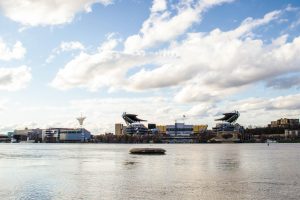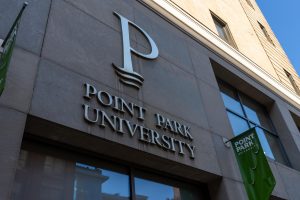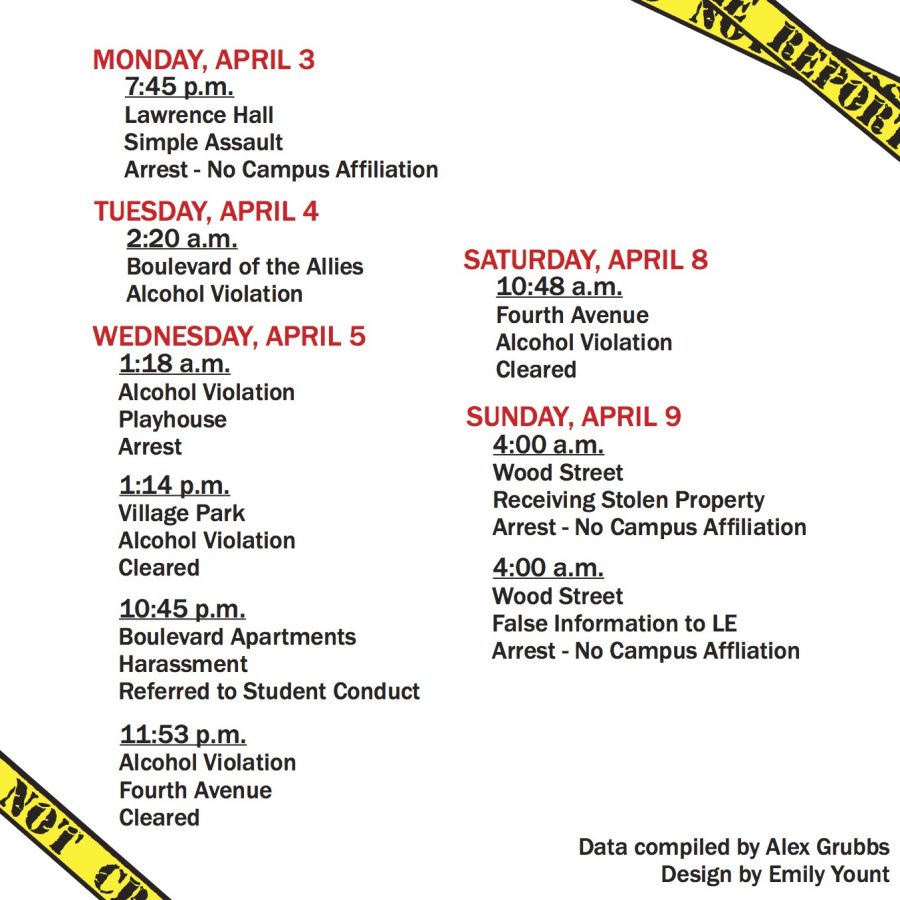Among many of Pittsburgh’s other rankings, its metropolitan area is the seventh most polluted city in the country, according to the American Lung Association’s 2010 annual air quality report. Specifically, Allegheny County received failing grades for both particulate matter (PM) and ozone pollution. Transportation is one of the largest contributors to ozone pollution, producing approximately 15 percent of the man-made carbon dioxide in the atmosphere, according to www.biologicaldiversity.org.Carbon dioxide and diesel exhaust are major contributors to air pollution, particularly in densely populated cities. Diesel exhaust shortens the lives of more than 230 Pittsburghers each year. The average lifetime diesel soot cancer risk for a resident of Allegheny County is one in 8,064. This risk is 124 times greater than the EPA’s acceptable cancer level of one in a million, according to www.catf.us.”Diesel is the biggest problem, because of the toxicity of the diesel emissions,” Jamin Bogi, the Education and Outreach Coordinator for the Group against Smog and Pollution organization said on Dec. 7. “When considering someone’s risk from getting cancer from air toxics in Pittsburgh, diesel pollution stands out as the greatest threat, greater than all of the other air toxics added together. Diesel vehicles are very durable, so some old, dirty engines can be with us for decades longer.”Carbon dioxide can be poisonous at high levels; it enters the bloodstream through the lungs and reduces oxygen delivery to the body’s organs and tissues. Exposure to high levels of carbon dioxide is most serious for those who suffer from cardiovascular disease, such as angina pectoris according to www.epa.gov.Other sources such as industrial processes and wildfires also emit carbon dioxide, but in cities with a large population and a high level of traffic up to 95 percent of carbon dioxide In the atmosphere can be attributed to motor vehicles, according to www.globalwarming.org.”Most of our pollution problems come from burning fossil fuels,” Bogi said.It is true that cars provide drivers with convenience and freedom, but it is also true that cars emit greenhouse gases, leading to climate change and increased respiratory illnesses. Aside from switching to public transportation, there are several ways to increase the efficiency of any given motor vehicle. Keeping tires properly inflated can increase fuel efficiency by 3.3 percent, removing excess weight, an extra 100 pounds can decrease fuel efficiency by 1 to 2 percent and keeping a car washed and waxed can improve fuel economy up to 7 percent by increasing aerodynamics according to www.pittsburghpa.gov.Buses that are full are six times more fuel efficient than any one occupant vehicle, according to www.portauthority.org. The Port Authority of Allegheny County has accumulated 32 hybrid buses since 2005. Four of which were just added this past fall to the fleet of 700. “Hybrids are more expensive than a diesel only bus, but then the lower fuel cost and the lower maintenance cost over their lifetime, puts the hybrids ahead,” Heather Pharo, public relations representative of Port Authority, said in a phone interview on Dec. 8.These hybrid buses store energy in a battery when the vehicle is decelerating or at times of low engine load. Energy from the battery is used to supplement the diesel engine, so less fuel is burned; therefore, fewer toxic gases are emitted.”There are a few other fringe benefits as well,” Pharo said. “The brakes in a hybrid vehicle experience less wear and tear and some of the consumables like engine oil and filters need to be changed less often than in a conventional, diesel-only bus.”Hybrid buses get 25 percent better fuel mileage on average and can achieve better acceleration. One regular bus, even if it is a conventional diesel-only bus, can take up to 60 cars off the road.Right now the Port Authority is focusing on increasing the number of articulated buses on its fleet and is also discussing some possible rapid bus transit routes to Oakland. No further extension of the cities light rail transit system is in the works due to the major capital investment for light rail, according to Pharo.”Right now we are facing possibly a rather large deficit for the next fiscal year, so at this time definitely our main focus is insuring that current service can continue to operate,” Pharo said.Mass transit reduces gas consumption and dependence on foreign oil; saving 4.2 billion gallons of gasoline a year in the United States Buses are generally cheaper to operate than trains per vehicle-mile, but trains have more capacity and so are cheaper per passenger-mile. Light rail produces far fewer emissions than a fleet of diesel buses, butthe benefits of light rail transit depend on the size of the system. Pittsburgh’s light rail system is fairly small so the economic and environmental benefits are approximately equal to having a fleet of buses. Once light rail is up and running, both infrastructure and trains are sturdier and less expensive to sustain than a fleet of buses and the roads they travel on.









